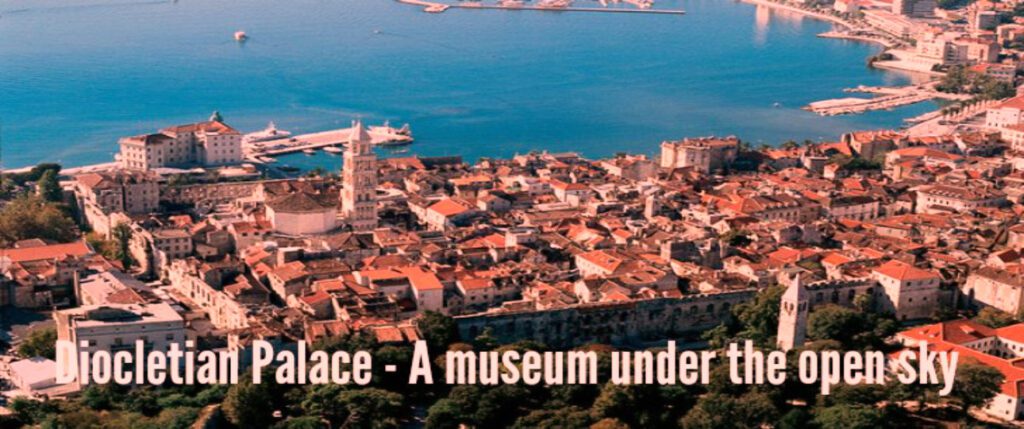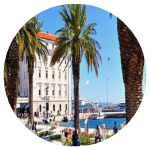Croatia has 1o official UNESCO WORLD HERITAGE sites and Split Croatia region has 3 Split County UNESCO sites.
Thank you for reading this post, don't forget to subscribe!These Split County UNESCO sites have been influenced by various civilizations such as the Greeks, Romans, Byzantines, Venetians, Ottomans, and Austrians.
According to the UNESCO World Heritage Convention, there are currently eight cultural and two natural sites in Croatia. The first three sites, the Historical Complex of Split with the Palace of Diocletian, Old City of Dubrovnik, and Plitvice Lakes National Park, were inscribed to the list at the 3rd UNESCO session in 1979.
Don't miss visiting these Unesco Sites to explore and admire some of the most impressive architectural and artistic achievements in Croatia. They will be of great interest to the tourists in learning about the history, culture, and nature of Dalmatia and Croatia.
THE OLDEST SPLIT COUNTY UNESCO SITES
The historical origin of the UNESCO sites in Croatia varies depending on the site. Here are the three most significant Unesco sites:
Historical Complex of Split with the Palace of Diocletian

The Historical Complex of Split with the Palace of Diocletian is a cultural UNESCO World Heritage Site in Croatia inscribed in 1979². It is recognized as both an urban and archaeological monument in Croatia.
This site comprises structures and buildings that were used mostly during the times of the Romans in Croatia.
The Historical Complex of Split with the Palace of Diocletian is a remarkable example of Roman imperial architecture and urban planning, as well as a testimony to the continuity of life and culture from ancient times to the present day.
The Palace of Diocletian was built between 295 and 305 A.D. by the emperor Diocletian as his place of retirement. He renounced the imperial crown in 305 and then lived at Split until his death in 316. The palace is one of the most complete and best-preserved architectural ensembles in the Balkans region.
The diocletian palace covers an area of about 38,000 square meters and has a rectangular shape with four large towers at the corners, four smaller ones on the walls, and a fortified gate on each side.

The palace was divided into two parts: the northern part was for the emperor's private use, and the southern part was for public ceremonies and receptions.
Walking Tour of Diocletian Palace Split
The palace was not only a residence, but also a military fortress, a religious center, and a town. The ruins of Diocletian's Palace can be found throughout the city of Split, and have been repurposed and reused in the city's modern structure.

The cathedral was built in the Middle Ages, reusing materials from the ancient mausoleum. Twelfth and 13th-century Romanesque churches, medieval fortifications, 15th-century Gothic palaces, and other palaces in Renaissance and Baroque styles make up the rest of the protected area.
The Historical Complex of Split with the Palace of Diocletian is a unique example of how different historical periods and cultures have influenced and shaped the urban fabric of a city². It is a testimony to the continuity of life and civilization in this region for more than 17 centuries.
Stari Grad Plain on the island of Hvar

The fertile Plain nearby Stari Grad on the island of Hvar was placed on the UNESCO World Heritage List in July 2008. It's the oldest among Split County UNESCO sites.
Cycle Hvar Tour Visiting Stari Grad Plain UNESCO Site
If you are visiting Hvar Island, this plain should be on your bucket list of Hvar Island tours. Stari Grad is the oldest town on the island of Hvar. It is situated in a protected cove on the northwestern part of the island.
The town was founded in the 4th century BC by the Greeks and was named Pharos. It was also inhabited in the Roman period and Romans named it Pharia.

Stari Grad Plain dates from the period of ancient Greece. Greeks divided the area into equal cadastral plots. Over a hundred archaeological findings from the Greek and Roman periods were found in Stari Grad Plain.

That includes many agricultural buildings from the Greek period and numerous rustic villas from the Roman period. The best-known rustic villa is Kuponovik north of Jelsa-Stari Grad road and also the Greek tower Maslinovik north of the airport in the Plain.
This type of land subdivision is the most significant ancient architectural project and best preserved Greek land division on the Mediterranean.
City of Trogir

This old town is the third on the list of three Split County UNESCO sites. Trogir town is a remarkable example of urban continuity that dates back to the Hellenistic period. It is located on a small island connected by bridges to the mainland and the larger island of Ciovo.
It has a rich architectural heritage that reflects the influence of successive rulers such as the Greeks, Romans, Venetians, Hungarians, and Austrians.
Top Trogir Walking Tour
Its orthogonal street plan is still preserved and it is embellished by many fine public and domestic buildings and fortifications.
Some of the most notable monuments include the Romanesque Cathedral of St. Lawrence with its famous portal by master Radovan, the Renaissance Cipiko Palace, the Baroque Town Hall, and the medieval city walls with two gates and a tower.

Trogir town was inscribed on the UNESCO World Heritage List in 1997 as an outstanding example of a medieval town that has conserved its urban fabric to an exceptional degree.

These sites are very popular among tourists and offer a glimpse into the rich history and culture of Croatia. Whether they are worth visiting depends on your personal preferences and interests, but I think they are definitely worth considering if you are planning a trip to Split County.


